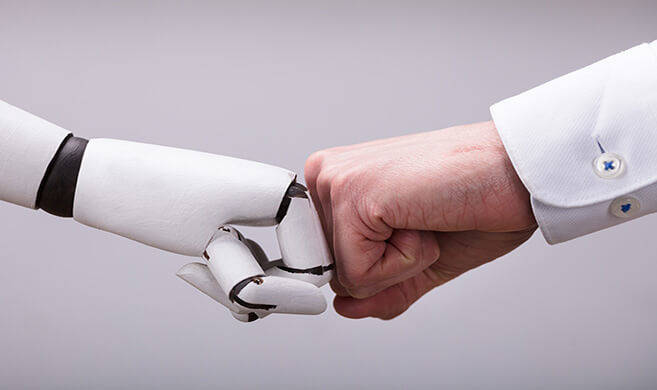When Notre-Dame de Paris caught fire earlier this year not a single fire fighter was injured putting out the blaze that resulted in the collapse of the medieval cathedral. This was in part thanks to the use of a caterpillar-tracked fire fighting robot named Colossus that went to places inside the 300-foot tall wooden structure that human fire fighters couldn’t reach. Indeed robots like Colossus are increasingly making their way into our lives in high-stakes settings ranging from bomb disposal to fire fighting and search-and-rescue. But how can human-and-robots teams perform optimal work? We asked whether an emotional attachment to a robot could help us use them more effectively.
Anyone who has ever watched the movie Star Wars and found himself or herself enamoured by the beeps and whirrs of R2-D2 will be familiar with how one might find oneself emotionally attached to a robot. Can we cultivate this kind of emotional attachment to robots artificially and could this improve the effectiveness of human-and-robots teams in real life?
We work better with robots if we build them ourselves
To answer this question, we devised the following experiment: 57 teams of university students collaborated with robots to complete a simple game that was designed to mimic the kinds of tasks robots are given in real life when working with first responders. The game involved a robot working together with humans to move plastic water bottles to a goal area as quickly as possible.
In one condition the students built the robot themselves and in another condition the students worked with pre-built robots. Earlier research has showed that building one’s own technology can lead us to believe that technology is an extension of ourselves, but our research is the first to examine whether building robots leads us to work with them more effectively.
Identifying with robots can lead us to work with them more effectively.
As we predicted, we found a clear effect where teams who built their own robots were more successful in the collaborative task, suggesting that identifying with robots can lead us to work with them more effectively. Many of our participants told us they had a visceral experience after building their robots, many said they felt a close attachment to the robots they had created. This was particularly apparent when we noticed that before the experiment they typically referred to the robot as “it” but after the experiment they would refer to their robots as “he” or “she”, indicating that they felt closer to the robots and assigned them human-like qualities.
Robot users building their own robots may not be as unrealistic as it sounds. The participants in this experiment spent only eight minutes putting together the Lego robots used in the study.
Robots designed for first responders could be sent in a near complete state similar to IKEA products and the emergency service personnel who use them could put the final parts together. This could have the added benefit of familiarising users with the workings of the robot.
When we see robots as our teammates we are more likely to win
It’s not news that uniforms help team members to feel like part of a team. We see uniforms being put to this use everywhere from football teams to schools and businesses. But does this phenomenon also extend to robots? We thought it would and put our theory to the test. We had students dress in their university’s basketball jerseys while dressing their robots up in the same uniforms. Just as expected, we found that when teams dressed their robots in their teams’ uniform they performed better at the collaborative task.
This is something we see already happening in the military where bomb disposal robots are regularly named and adorned with paint, decorations and stickers. This practice goes back at least as far as World War I, when tanks and airplanes would often be painted with amusing designs to demonstrate allegiance to a battalion or squadron. Our research suggests that this kind of behaviour towards robots could bring genuine benefits when robots are used in the real world, even in areas unrelated to conflict.












